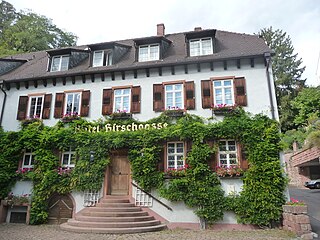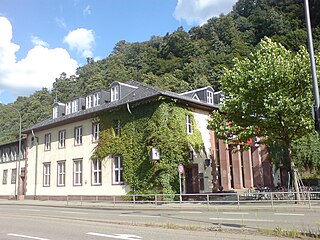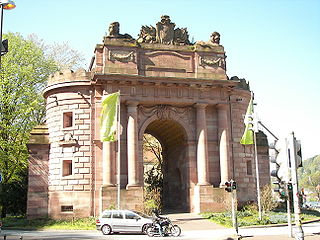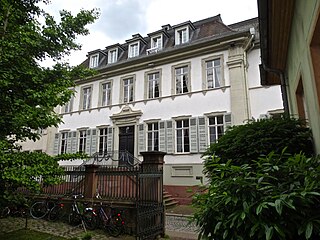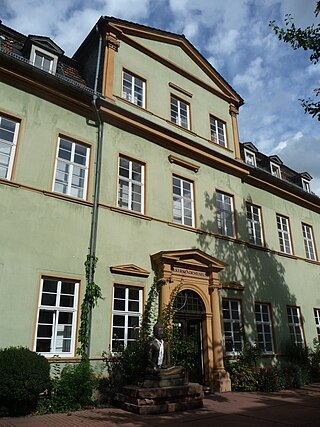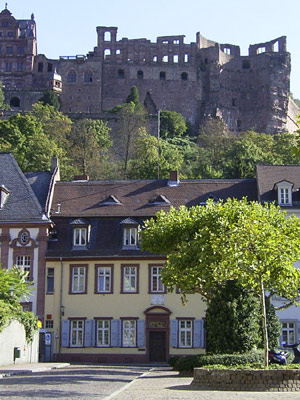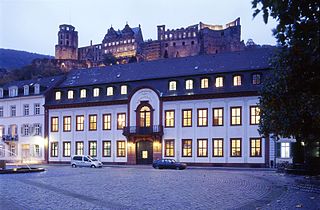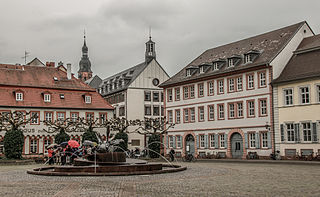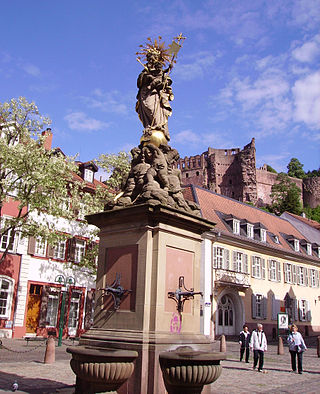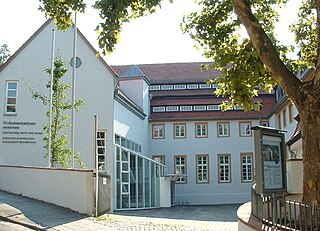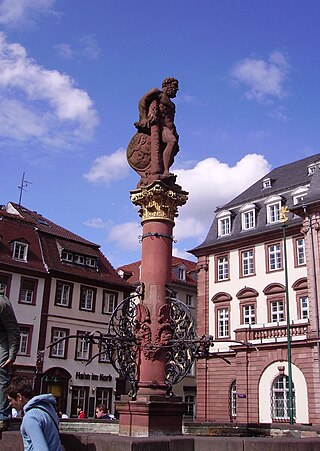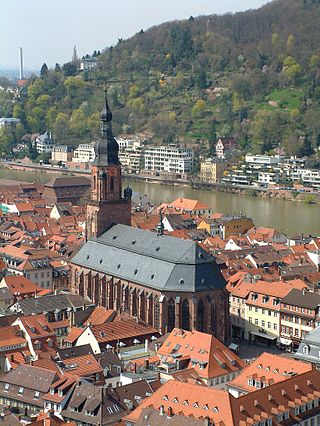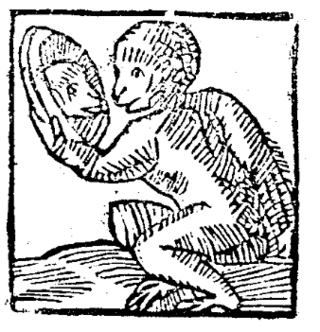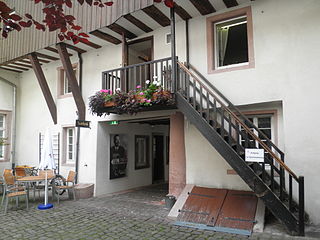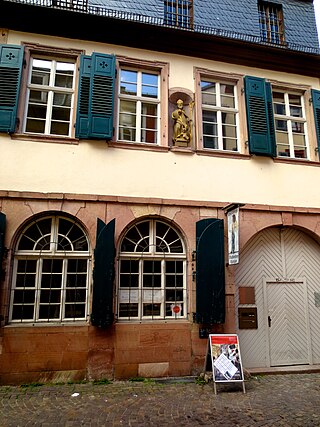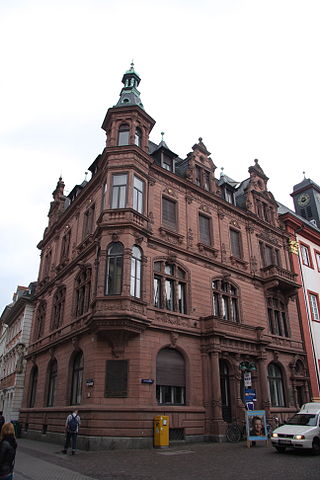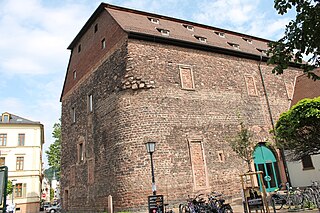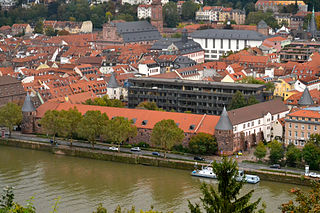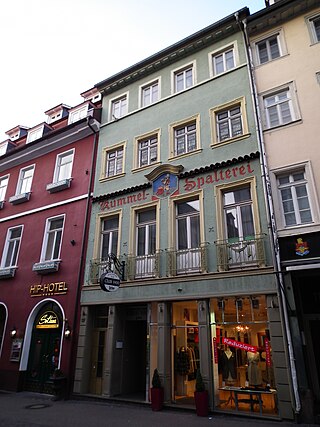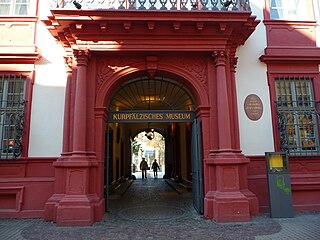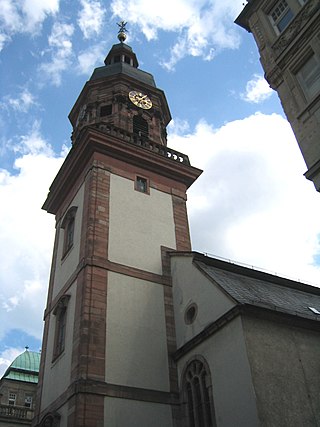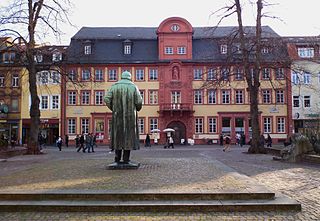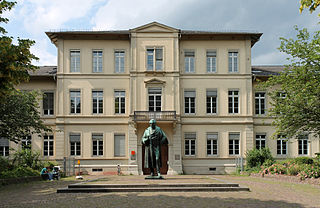Self-guided Sightseeing Tour #1 in Heidelberg, Germany
Legend
Guided Free Walking Tours
Book free guided walking tours in Heidelberg.
Guided Sightseeing Tours
Book guided sightseeing tours and activities in Heidelberg.
Tour Facts
5.8 km
262 m
Experience Heidelberg in Germany in a whole new way with our free self-guided sightseeing tour. This site not only offers you practical information and insider tips, but also a rich variety of activities and sights you shouldn't miss. Whether you love art and culture, want to explore historical sites or simply want to experience the vibrant atmosphere of a lively city - you'll find everything you need for your personal adventure here.
Activities in HeidelbergIndividual Sights in HeidelbergSight 1: Die Hirschgasse Heidelberg
Hirschgasse is one of the oldest and most famous inns in Heidelberg. It gained importance above all as a long-standing timpani venue for the local student fraternities.
Sight 2: Karlstor-Bahnhof
Heidelberg-Altstadt station is a station on the eastern edge of the old town of Heidelberg, Baden-Württemberg, Germany. Until 13 December 2008, the station was called Heidelberg Karlstor.
Sight 3: Karlstor
Get Ticket*The Karlstor is a historic building in the city of Heidelberg. It has marked the eastern end of Heidelberg's old town since 1781.
Sight 4: Haus Buhl
Haus Buhl is a listed building in Heidelberg's old town near the eastern entrance to the city.
Sight 5: Völkerkundemuseum
The Ethnological Museum of the J. and E. von Portheim Foundation in Heidelberg houses collections on religion, art and everyday life from the regions of Asia, Africa and Oceania. Art and culture of these regions are presented in changing special exhibitions.
Sight 6: Zum Seppl
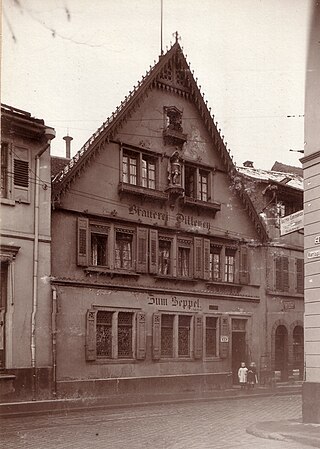
The Gasthaus Zum Seppl, syn. "Zum Seppel", is a historic student pub in Heidelberg's old town.
Sight 7: Mittermaier-Palais
The Mittermaierhaus is a baroque town house in Heidelberg, Germany. It is located at Karlstraße 8 below the Heidelberg Castle.
Sight 8: Akademie der Wissenschaften
The Grand Ducal Palace is a building built in 1717 and is located on Karlsplatz in Heidelberg. The palace is now the seat of the Heidelberg Academy of Sciences and Humanities.
Sight 9: Germanistisches Seminar
The Roßhirt residential building is a listed building in Heidelberg.
Sight 10: Kornmarkt-Madonna
The Kornmarkt-Madonna is a fountain sculpture in the Kornmarkt in the Altstadt of Heidelberg. It is also known as the Mariensäule and Muttergottesbrunnen.
Sight 11: Heidelberg Castle
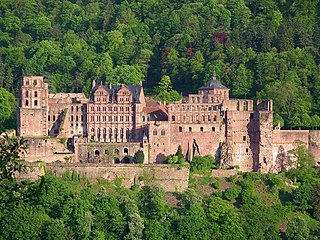
Heidelberg Castle is a ruin in Germany and landmark of Heidelberg. The castle ruins are among the most important Renaissance structures north of the Alps.
Sight 12: Stückgarten
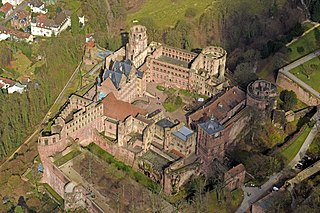
The western terrace of the Heidelberg Castle is referred to as the piece garden. The name is derived from the cannons that were set up there in the early modern period and which were also referred to as "pieces". Initially used for defense purposes, the conversion to a garden took place in the early 17th century. Access is marked by the Elisabethentor, which was created around 1615 as a gift for Elisabeth Stuart. During the usage period of the castle, there was also a bird house in the piece garden, which was later converted into an orangery, of which only foundations are visible today. Today the piece garden serves primarily as a viewpoint for the castle visitors, from which a view of the Palatinate Forest beyond the Rhine plain is possible from a clear view. The piece garden connects the castle atrium in the south with the "thick tower" in the north. To the east is a deep cut in the castle mountain of the "Hirschgraben", to the west the piece garden protrudes on steep support walls above the Heidelberg old town.
Sight 13: Dokumentations- und Kulturzentrum Deutscher Sinti und Roma
The Documentation and Cultural Centre of German Sinti and Roma was established in Heidelberg, Germany, in the early 1990s, as a memorial to Sinti and Roma people who were killed by the National Socialists Party. After several years of extension work collecting stories from the victims, conducting research, and conversion, the building complex was ceremonially opened to the public on 16 March 1997, and was supported by the attendance of many Roma and Sinti survivors. It is the world's first permanent exhibition on the genocide perpetrated upon the Sinti and Roma by the Nazis. The documentation Centre has three levels and covers an area of almost 700 square meters, and traces the history and stories of the persecution of the Sinti and Roma under National Socialism. The institution is overseen by Central Council of German Sinti and Roma, supported by the city of Heidelberg, and is the beneficiary of special funds from the German Federal Government and the land of Baden-Württemberg.
Wikipedia: Documentation and Cultural Centre of German Sinti and Roma (EN), Website
Sight 14: Hercules Brunnen
The Hercules Fountain stands in front of the town hall in the old town of the Baden-Württemberg city of Heidelberg.
Sight 15: Church of the Holy Spirit
The Church of the Holy Spirit is the largest church in Heidelberg, Germany. The church, located in the marketplace in the old town center, was constructed between 1398 and 1515 in the Romanesque and Gothic styles. It receives 1–3 million guests annually, making it among the most visited churches in Germany.
Sight 16: Alte Brücke
The Karl Theodor Bridge, commonly known as the Old Bridge, is an arch bridge in Heidelberg that crosses the Neckar river. It connects the Old City with the eastern part of the Neuenheim district of the city on the opposite bank. The current bridge, made of Neckar sandstone and the ninth built on the site, was constructed in 1788 by Elector Charles Theodore, and is one of the best-known landmarks and tourist destinations in Heidelberg.
Sight 17: Heidelberger Brückenaffe
The Heidelberg Bridge Monkey dates back to the 15th century. It was a stone statue sitting in the tower of the Old Bridge, which was located opposite Heidelberg’s Old Town. The purpose of the tower was to instill fear and respect in anyone arriving in the town, while the monkey represented mockery. The statue was destroyed with the tower during the Nine Years' War.
Sight 18: Reichspräsident-Friedrich-Ebert-Gedenkstätte
The President Friedrich Ebert Foundation Memorial in Heidelberg is a non-partisan foundation financed by the German Federal Government. It commemorates the life and work of Friedrich Ebert, who was born in the house on 4 February 1871. From humble origins, he became a member of the Social Democratic Party of Germany and was finally elected as the first German democratic head of state in 1919. Faced with extreme internal and external pressures, he prepared the way for parliamentary democracy in Germany after the end of World War I. In these years he preserved national unity and made a vital contribution to the creation of a social and democratic republic.
Sight 19: Jesuitenkirche
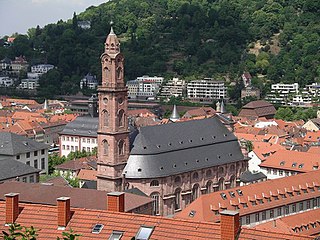
The Jesuit Church is the largest and most important church in Heidelberg next to the Church of the Holy Spirit and forms the architectural focus of the former Jesuit quarter in the old town in the immediate vicinity of the University Square. Today it is the main church of the Roman Catholic Holy Spirit parish in Heidelberg's old town. The church was built between 1712 and 1759 in the Baroque style, the neo-baroque tower was added between 1868 and 1872. The church, which is not geostet as usual, but faces south, is a "building that is as remarkable as it is unusual".
Sight 20: Alte Universität, Rektorat
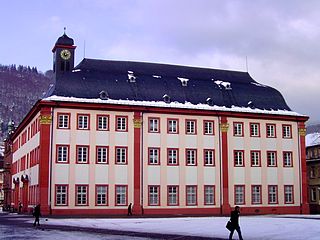
The Old University is an important baroque building of the University of Heidelberg located between the Hauptstrasse and the Universitätsplatz in the old town of Heidelberg. It contains the Hall of the University, once the main assembly hall and lecture theatre of the University, as well as the Heidelberg University Museum and the old University gaol.
Sight 21: Historischer Studentenkarzer
The last student prison in Heidelberg's history was located at Augustinergasse 2 and served as a prison for students of the Ruprecht-Karls-University of Heidelberg. Today, it is attached to the Old University of Heidelberg as part of the Museum of the History of the University.
Sight 22: Assyriologie, versch. Uni-Einrichtungen
The residential and banking building at Hauptstraße 126 is a listed building in Heidelberg, Germany.
Wikipedia: Wohn- und Bankhaus Hauptstraße 126 (Heidelberg) (DE)
Sight 23: Heuscheuer
The Heuscheuer (Heuscheune) is a former warehouse in Heidelberg, Germany. Today, the building serves as the university's lecture hall.
Sight 24: Marstall
The Heidelberg Marstall, built from Neckartäler sandstone, is one of the oldest still preserved buildings from the early modern period in Heidelberg. The building, which was now called Marstall, was originally called the Zeughaus, while the Marstall south was in a building that was destroyed today.
Sight 25: Kümmel-Spalterei
The Kümmelspalterei is a listed building in Heidelberg with the address Hauptstraße 117.
Sight 26: Institutsgebäude
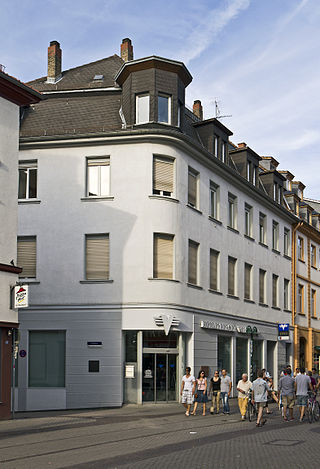
The former Hotel Badischer Hof was opened in 1780. With its central location at Heidelberger Hauptstraße 113, it was long considered the most distinguished house on the square. Among his illustrious guests was King Ludwig I of Bavaria.
Sight 27: Kurpfälzisches Museum
The Kurpfälzisches Museum is a museum of art and archaeology in Heidelberg, Germany. It is located in the Palais Morass. It was founded in the late 1870s, when the city of Heidelberg purchased the private collection of the artist and art historian Charles de Graimberg.
Sight 28: Providenzkirche
The Church of Providence is a Protestant church on the Hauptstrasse of the old town of Heidelberg. Until the union of the Protestant Church in Baden in 1821, this was the Lutheran church of central Heidelberg, while the Church of the Holy Spirit was the meeting place of the Calvinist church.
Sight 29: Kongresshaus Stadthalle Heidelberg
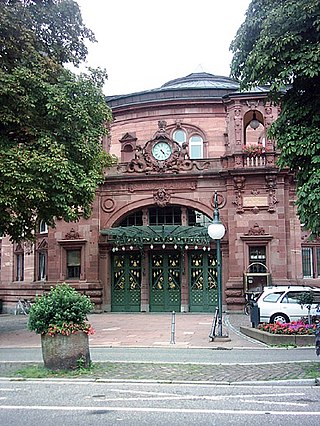
The Stadthalle Heidelberg is a congress and cultural center located in the old town of Heidelberg on the banks of the Neckar River. It was built according to the plans of the architects Jakob Henkenhaf and Friedrich Ebert in the years 1901 to 1903.
Sight 30: Institut für Übersetzen und Dolmetschen
The Haus zum Riesen is a baroque palace on the Hauptstrasse in Heidelberg, built in 1707/8. The building is named for a statue with decorates the façade. Since the middle of the nineteenth century, it has been used by Heidelberg University and several prominent academics have worked in it.
Sight 31: Friedrichsbau
The Friedrichsbau, syn. Fridericianum, is a historic building at Hauptstrasse 47/49 in Heidelberg. The chateau-like three-wing property was built in 1863 for use by the Ruprecht-Karls-University Heidelberg and is located in the immediate vicinity of the Old Anatomy. Today it houses the Psychological Institute of the University of Heidelberg.
Share
How likely are you to recommend us?
Disclaimer Please be aware of your surroundings and do not enter private property. We are not liable for any damages that occur during the tours.
GPX-Download For navigation apps and GPS devices you can download the tour as a GPX file.
